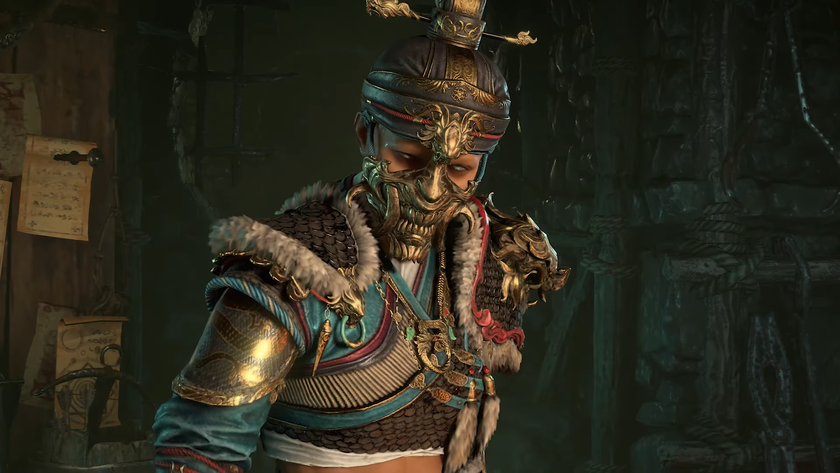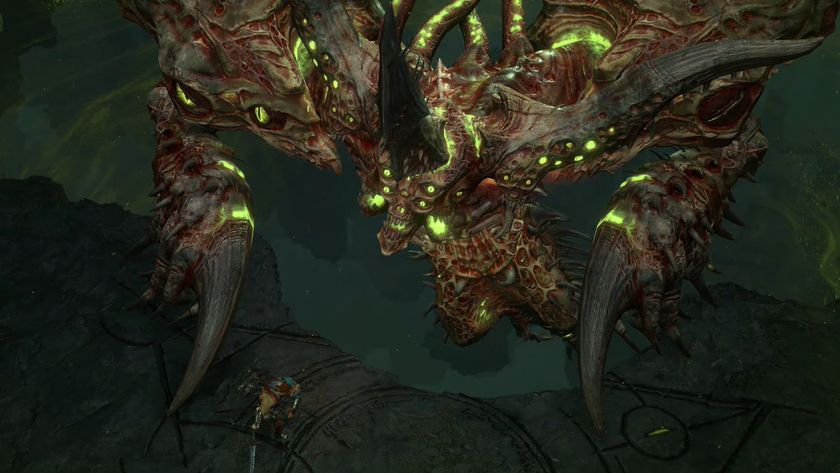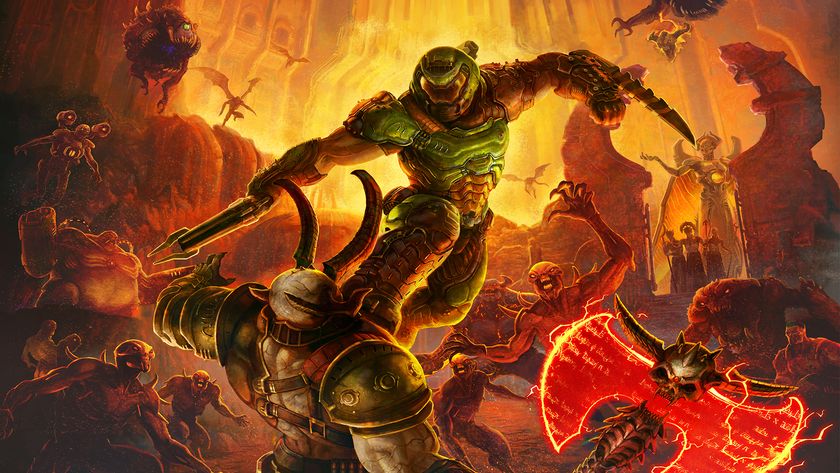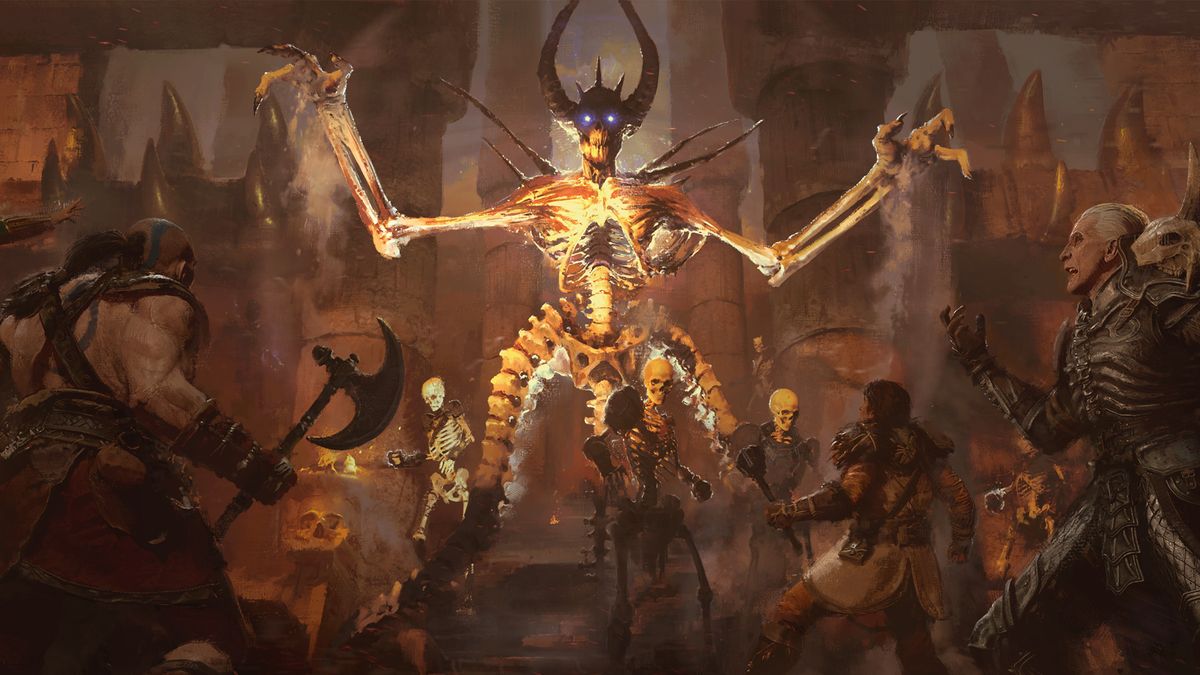
For a certain generation of players, Diablo 2 wasn't a video game – it was a rite of passage. If you made it past the piercing eyes of the Dark Wanderer, the skeletal embodiment of hell itself burned into the box art, there's a good chance that you were duty-bound to cleanse the sins of Sanctuary for evermore. Diablo 2 was an obsession that could be easily nurtured; its demons inexorcisable, even as they claimed dominance over every second of your spare time. Two decades later, Diablo 2 deserves its resurrection, if only to enthral a new generation into its grasp.
Blizzard Entertainment has shown a willingness to dip into its archive in recent years. It delivered StarCraft Remastered and Warcraft 3: Reforged – games that had become increasingly difficult to access with each passing year – as well as World of Warcraft Classic, which sought to preserve the earliest years of the MMO not in amber but on a living server. As revealed at BlizzCon 2021, it is time for Diablo 2: Resurrected. 21 years, one sequel released and another in development, and an endless parade of would-be successors later, and there's still nothing quite like Diablo 2.
Click, Kill, Repeat
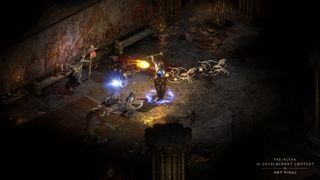
The original Diablo sought to reduce the RPG to its barest of bones. In doing so, Blizzard North had the space necessary to deliver one of the finest sequels in the history of interactive entertainment. Development of Diablo 2 began from a foundation of deep customisation, familiar mechanics, simple controls, and an agreeable game loop. Each of these elements were iterated upon, subtly refined and sharpened. The resulting experience expanded the scope and ambition of what Diablo could be, and it did so without complicating its play or diluting its essence.
As a result of this, Diablo 2 created a formula and established a framework that all ARPGs released after the year 2000 have followed, consciously or otherwise. Its influence seeped into a generation of game creators, its legacy scattered all throughout modern gaming. And as deep as its roots may run, Diablo 2 has never been replicated, nor has its magic been recaptured. After all, there has to be a reason why you are able to boot up a 20-year-old game and still find multiplayer servers populated with players.
Perhaps that's because Diablo 2 has no endgame, not really. Instead, it comes equipped with an effectively endless gameplay loop. The game is in the grind, in the unyielding search for loot and exploration of a procedurally-generated world that is still capable of producing shock and awe. Looking back at it today, it's easy to be endlessly impressed with how well balanced its core experience is – between the structure of its loot, class, and levelling systems, and the tightly defined player versus player matchups online.
Diablo 2 was bigger and better than its predecessor in every respect, faster and more challenging too, but that isn't what has helped it stand the test of time. Rather, it's how the easy cadence to its play made it feel ritualistic. There's an economy to its design that worked to make the grind feel gratifying, and a simplicity to its moment-to-moment action that could soothe the soul in ways other games wouldn't or couldn't. Click, kill, repeat; it's a cycle that worked in 2000 and will work just as potently again, here in 2021.
Tracking Diablo 2's influence
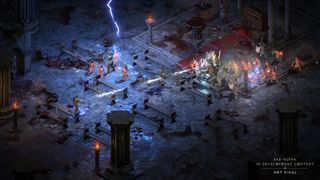
Even if you haven't played Diablo 2 before, you'll have felt its influence elsewhere. Particularly if you're a fan of Blizzard's games, as Diablo's core proficiencies crept into just about everything the company has produced since, in one way or another. Diablo 2's skill tree system held sway over World of Warcraft's talent system, from the MMO's inception all the way through to the Cataclysm expansion. Its array of powerful enemies with randomised power-sets inspired StarCraft 2's co-op Commanders, and of course Warcraft 3: Reign of Chaos drew inspiration from the structure of Diablo 2's loot tables, item distribution, and skill point assignment.
Sign up to the 12DOVE Newsletter
Weekly digests, tales from the communities you love, and more
Of course, we needn't tell you how much the legacy of Diablo 2 has impacted the development of Diablo 3 and the upcoming Diablo 4. So instead we'll let the team tell you. "[Diablo 2] came out early in my career and it was one of the games that helped me grow as a game designer by leading me to understand the importance of simple but well-executed game loops and controls," says Jesse McCree, lead game designer of Diablo 4.
That's a sentiment echoed by Diablo 4's associate game producer Lily Gardner: "Putting what Diablo 2 means to me in concise words that don't amount to a novel may be somewhat difficult, but considering the impact it's had on both my love of games and my career within the games industry."
"Much of [my] fondness for all things dark and demonic, as well as engrossing myself in a game for weeks on end, hasn't faded, and I attribute much of that to Diablo 2", continues Gardner. "Without my experiences in Sanctuary, I may not have ever had the desire to work at Blizzard, or in games, or my somewhat gothic sense of taste may not have ever developed."
Diablo 2 has shaped video games for two decades, both inside and outside of Blizzard. Its lineage lives on in Diablo 3, its legacy is reflected through everything from Borderlands to Path of Exile, but players deserve a chance to experience the originator for themselves. That's why Diablo 2 deserves resurrection, because there's a generation of players out there that are yet to sample perfection through simplicity.
The pressure of resurrection
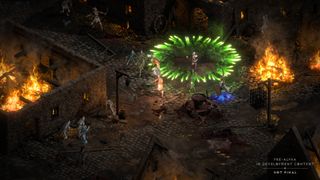
The truth is, you could dig out a copy of Diablo 2 right now and still have an amazing time with it. I know I infrequently do. I've got an old laptop buried away in a box for such an occasion, it has stayed with me between countless house moves so that I can continue my years-long push for The Holy Grail – the quest to single-handedly collect every set and unique item in the game. I'll get there eventually. Probably.
The thing is, Diablo 2: Resurrected exists for those that never had the chance to, or can't because their computer will no longer boot the game up. For older players, nostalgia will help you clear a lot of hurdles that exist when trying to play the game now. For newer players, many of whom may have been born after the game released the first time around, perhaps that isn't the case. As gorgeous as the visual aesthetic is to my weary eyes, I understand why it might be somewhat unappealing to a generation of players weaned on photo-realistic environments, crisply rendered art assets, and game resolutions capable of going beyond 800x600p. That's why Diablo 2 Resurrected is so necessary for this moment.
"When we think about Diablo 2, we think about it as a definitive pillar in our foundation," says J. Allen Brack, president of Blizzard, speaking from BlizzCon. "Diablo 2 Resurrected is a full HD remaster of both the original game and the expansion, Lord of Destruction. It takes the 2D sprite-based classic that we love and brings it into the present in 3D, utilising up-to-date graphical rendering and lighting technologies. It also includes modernising, all 27 minutes of cinematics recreated shot for shot with the explicit intention of including both the look and pacing of the original movies."
Arriving later this year, Diablo 2: Resurrected (which includes the fabled Lord of Destruction expansion) is set to land on PC, PS4, PS5, Xbox One, Xbox Series X, and Nintendo Switch – a full 4K remaster featuring new 3D models, remade cinematics, and upgraded audio. It's an impressive looking package, designed to give Diablo 2 the resurrection it so clearly deserves.

Josh West is the Editor-in-Chief of 12DOVE. He has over 15 years experience in online and print journalism, and holds a BA (Hons) in Journalism and Feature Writing. Prior to starting his current position, Josh has served as GR+'s Features Editor and Deputy Editor of games™ magazine, and has freelanced for numerous publications including 3D Artist, Edge magazine, iCreate, Metal Hammer, Play, Retro Gamer, and SFX. Additionally, he has appeared on the BBC and ITV to provide expert comment, written for Scholastic books, edited a book for Hachette, and worked as the Assistant Producer of the Future Games Show. In his spare time, Josh likes to play bass guitar and video games. Years ago, he was in a few movies and TV shows that you've definitely seen but will never be able to spot him in.
